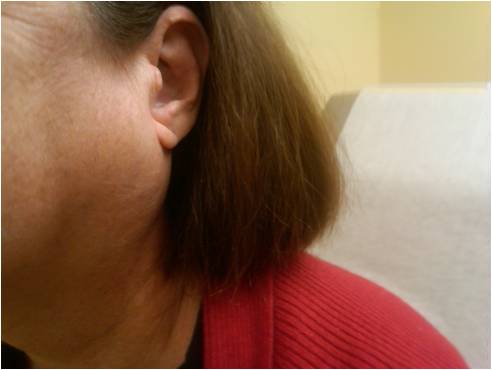[1]
Kaneko Y. [Diagnostic (Classification) Criteria and Treatment Guidelines of Collagen-vascular Diseases: Hos to Use and Cautions on Applying Them for General Physicians. Topics: VII. Sjögren Syndrome]. Nihon Naika Gakkai zasshi. The Journal of the Japanese Society of Internal Medicine. 2015 Oct:104(10):2149-56
[PubMed PMID: 30160930]
[2]
Brito-Zerón P, Retamozo S, Ramos-Casals M. Phenotyping Sjögren's syndrome: towards a personalised management of the disease. Clinical and experimental rheumatology. 2018 May-Jun:36 Suppl 112(3):198-209
[PubMed PMID: 30156544]
[3]
Argyropoulou OD, Valentini E, Ferro F, Leone MC, Cafaro G, Bartoloni E, Baldini C. One year in review 2018: Sjögren's syndrome. Clinical and experimental rheumatology. 2018 May-Jun:36 Suppl 112(3):14-26
[PubMed PMID: 30156536]
[4]
Baer AN, Akpek EK, Alevizos I, 18-21 April 2018, Washington, DC, USA. 14th International Symposium on Sjögren's Syndrome. Clinical and experimental rheumatology. 2018 May-Jun:36 Suppl 112(3):241-255
[PubMed PMID: 30156551]
[5]
Kroese FGM, Haacke EA, Bombardieri M. The role of salivary gland histopathology in primary Sjögren's syndrome: promises and pitfalls. Clinical and experimental rheumatology. 2018 May-Jun:36 Suppl 112(3):222-233
[PubMed PMID: 30156550]
[6]
Kiadaliri AA, Mohammad AJ, Englund M. Hospitalizations due to systemic connective tissue diseases: Secular trends and regional disparities in Sweden, 1998-2016. International journal of rheumatic diseases. 2018 Nov:21(11):1900-1906. doi: 10.1111/1756-185X.13341. Epub 2018 Aug 30
[PubMed PMID: 30168267]
[7]
Alani H, Henty JR, Thompson NL, Jury E, Ciurtin C. Systematic review and meta-analysis of the epidemiology of polyautoimmunity in Sjögren's syndrome (secondary Sjögren's syndrome) focusing on autoimmune rheumatic diseases. Scandinavian journal of rheumatology. 2018 Mar:47(2):141-154. doi: 10.1080/03009742.2017.1324909. Epub 2017 Sep 20
[PubMed PMID: 28927315]
Level 1 (high-level) evidence
[8]
Bunya VY, Fernandez KB, Ying GS, Massaro-Giordano M, Macchi I, Sulewski ME, Hammersmith KM, Nagra PK, Rapuano CJ, Orlin SE. Survey of Ophthalmologists Regarding Practice Patterns for Dry Eye and Sjogren Syndrome. Eye & contact lens. 2018 Nov:44 Suppl 2(Suppl 2):S196-S201. doi: 10.1097/ICL.0000000000000448. Epub
[PubMed PMID: 29369232]
Level 3 (low-level) evidence
[9]
Tzioufas AG, Goules AV. Limited efficacy of targeted treatments in Sjögren's syndrome: why? Clinical and experimental rheumatology. 2018 May-Jun:36 Suppl 112(3):27-28
[PubMed PMID: 29998826]
[10]
De Vita S, Gandolfo S, Zandonella Callegher S, Zabotti A, Quartuccio L. The evaluation of disease activity in Sjögren's syndrome based on the degree of MALT involvement: glandular swelling and cryoglobulinaemia compared to ESSDAI in a cohort study. Clinical and experimental rheumatology. 2018 May-Jun:36 Suppl 112(3):150-156
[PubMed PMID: 30156548]
[11]
Martel A, Coiffier G, Bleuzen A, Goasguen J, de Bandt M, Deligny C, Magnant J, Ferreira N, Diot E, Perdriger A, Maillot F. What is the best salivary gland ultrasonography scoring methods for the diagnosis of primary or secondary Sjögren's syndromes? Joint bone spine. 2019 Mar:86(2):211-217. doi: 10.1016/j.jbspin.2018.06.014. Epub 2018 Jul 24
[PubMed PMID: 30053612]
[12]
Baer AN, Walitt B. Update on Sjögren Syndrome and Other Causes of Sicca in Older Adults. Rheumatic diseases clinics of North America. 2018 Aug:44(3):419-436. doi: 10.1016/j.rdc.2018.03.002. Epub
[PubMed PMID: 30001784]
[13]
Sumida T, Azuma N, Moriyama M, Takahashi H, Asashima H, Honda F, Abe S, Ono Y, Hirota T, Hirata S, Tanaka Y, Shimizu T, Nakamura H, Kawakami A, Sano H, Ogawa Y, Tsubota K, Ryo K, Saito I, Tanaka A, Nakamura S, Takamura E, Tanaka M, Suzuki K, Takeuchi T, Yamakawa N, Mimori T, Ohta A, Nishiyama S, Yoshihara T, Suzuki Y, Kawano M, Tomiita M, Tsuboi H. Clinical practice guideline for Sjögren's syndrome 2017. Modern rheumatology. 2018 May:28(3):383-408. doi: 10.1080/14397595.2018.1438093. Epub 2018 Mar 13
[PubMed PMID: 29409370]
Level 1 (high-level) evidence
[14]
Seror R, Mariette X. Guidelines for treatment of primary Sjögren's syndrome: a first useful stone but still much to do. Rheumatology (Oxford, England). 2017 Oct 1:56(10):1641-1642. doi: 10.1093/rheumatology/kex320. Epub
[PubMed PMID: 28957571]
[15]
Price EJ, Rauz S, Tappuni AR, Sutcliffe N, Hackett KL, Barone F, Granata G, Ng WF, Fisher BA, Bombardieri M, Astorri E, Empson B, Larkin G, Crampton B, Bowman SJ, British Society for Rheumatology Standards, Guideline and Audit Working Group. The British Society for Rheumatology guideline for the management of adults with primary Sjögren's Syndrome. Rheumatology (Oxford, England). 2017 Oct 1:56(10):e24-e48. doi: 10.1093/rheumatology/kex166. Epub
[PubMed PMID: 28957550]
[16]
López-Pintor RM, Fernández Castro M, Hernández G. Oral involvement in patients with primary Sjögren's syndrome. Multidisciplinary care by dentists and rheumatologists. Reumatologia clinica. 2015 Nov-Dec:11(6):387-94. doi: 10.1016/j.reuma.2015.03.010. Epub 2015 May 26
[PubMed PMID: 26022574]
[17]
Brito-Zerón P, Theander E, Baldini C, Seror R, Retamozo S, Quartuccio L, Bootsma H, Bowman SJ, Dörner T, Gottenberg JE, Mariette X, Bombardieri S, de Vita S, Mandl T, Ng WF, Kruize AA, Tzioufas A, Vitali C, Buyon J, Izmirly P, Fox R, Ramos-Casals M, Eular Sjögren Syndrome Task Force. Early diagnosis of primary Sjögren's syndrome: EULAR-SS task force clinical recommendations. Expert review of clinical immunology. 2016:12(2):137-56. doi: 10.1586/1744666X.2016.1109449. Epub 2015 Dec 22
[PubMed PMID: 26691952]
[18]
Milin M, Cornec D, Chastaing M, Griner V, Berrouiguet S, Nowak E, Marhadour T, Saraux A, Devauchelle-Pensec V. Sicca symptoms are associated with similar fatigue, anxiety, depression, and quality-of-life impairments in patients with and without primary Sjögren's syndrome. Joint bone spine. 2016 Dec:83(6):681-685. doi: 10.1016/j.jbspin.2015.10.005. Epub 2016 Jan 13
[PubMed PMID: 26774177]
Level 2 (mid-level) evidence
[19]
Flores-Chávez A, Kostov B, Solans R, Fraile G, Maure B, Feijoo-Massó C, Rascón FJ, Pérez-Alvarez R, Zamora-Pasadas M, García-Pérez A, Lopez-Dupla M, Duarte-Millán MÁ, Ripoll M, Fonseca-Aizpuru E, Guisado-Vasco P, Pinilla B, de-la-Red G, Chamorro AJ, Morcillo C, Fanlo P, Soto-Cárdenas MJ, Retamozo S, Ramos-Casals M, Brito-Zerón P, GEAS-SS SEMI Registry. Severe, life-threatening phenotype of primary Sjögren's syndrome: clinical characterisation and outcomes in 1580 patients (GEAS-SS Registry). Clinical and experimental rheumatology. 2018 May-Jun:36 Suppl 112(3):121-129
[PubMed PMID: 30156546]
[20]
Al Hamad A, Lodi G, Porter S, Fedele S, Mercadante V. Interventions for dry mouth and hyposalivation in Sjögren's syndrome: A systematic review and meta-analysis. Oral diseases. 2019 May:25(4):1027-1047. doi: 10.1111/odi.12952. Epub 2018 Sep 27
[PubMed PMID: 30086205]
Level 1 (high-level) evidence

